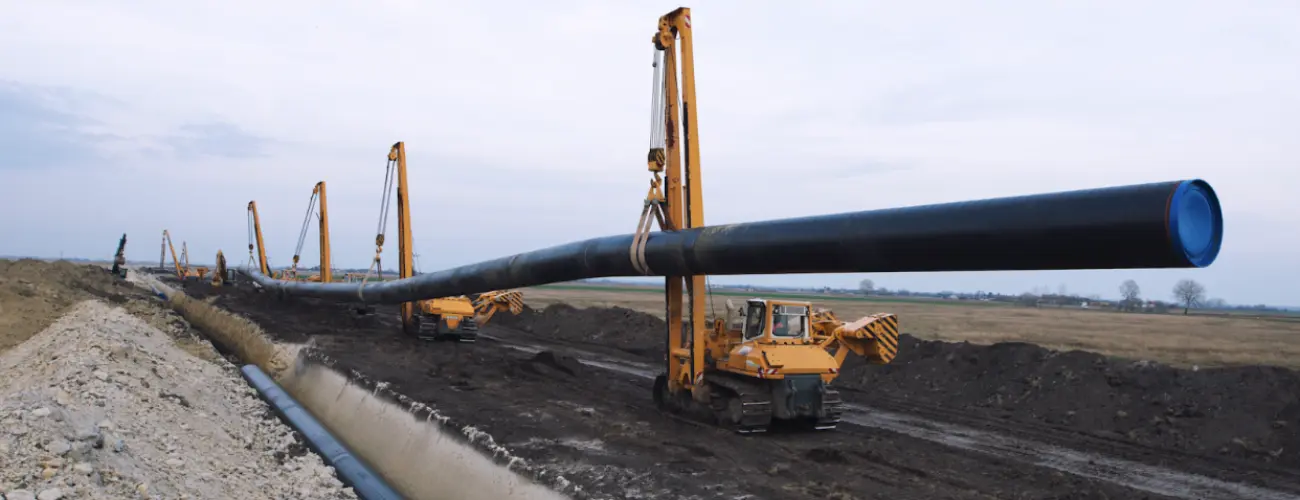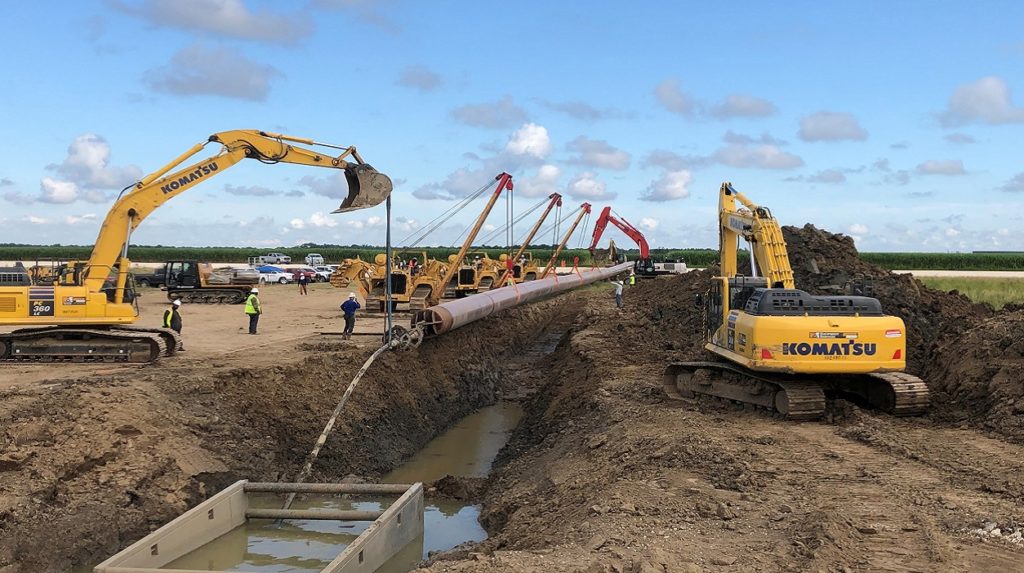What Affects Your System’s Lifespan? Insights From Creek Pipe HDPE installation
Comprehending the Fundamentals of Pipes Installation: What You Required to Find Out About the Process
Appropriate pipe installation is necessary for any kind of pipes system. It needs careful consideration of various aspects, consisting of product choice and adherence to regional policies. A well-planned layout can prevent problems like stress loss, while the right devices assure efficient signing up with strategies. Also experienced installers can make typical errors. Understanding these basics can lead to an extra reliable and resilient system, motivating a more detailed look at the crucial elements included in the procedure.
Picking the Right Materials for Pipe Installation
When considering pipe installation, the choice of proper products is vital to making sure toughness and performance. Different materials are offered, each offering one-of-a-kind benefits and considerations. As an example, PVC pipelines are lightweight, resistant to rust, and affordable, making them perfect for domestic pipes. Conversely, copper pipelines, known for their longevity and capability to stand up to high temperature levels, are typically favored for home heating systems.Additionally, galvanized steel pipelines provide strength and durability, appropriate for durable applications, although they are vulnerable to corrosion over time.For underground installments, polyethylene pipes are preferred because of their flexibility and resistance to tension fracturing. Appropriate material choice relies on the particular requirements of the job, consisting of pressure rankings, temperature variants, and the chemical nature of the liquids being transferred - Creek Pipe trenching services. Eventually, informed choices concerning pipe products add greatly to the general success and long life of plumbing systems
Recognizing Local Building Regulations and Regulations
Exactly how can comprehending local building ordinance and policies effect pipe installation? Experience with these codes is important for making certain that pipe setups are safe, certified, and efficient. Neighborhood building regulations describe specific demands relating to materials, installation techniques, and safety measures, which need to be followed in order to prevent prospective lawful concerns and pricey fines.Failure to comply can result in evaluations being stopped working, delays in job conclusion, or also mandated removal of incorrectly set up pipelines. On top of that, comprehending zoning laws and policies can influence the sort of materials allowed, as well as the approaches made use of for installation.Contractors and home owners alike should invest time in examining regional policies before commencing any installation project. This aggressive approach not just promotes safety yet also enhances the total top quality and longevity of the plumbing system, eventually promoting lasting performance and fulfillment.
Preparation Your Pipe Format and Design
Correct preparation of pipe layout and design is crucial for attaining an efficient pipes system. This procedure begins with reviewing the certain needs of the area, taking into consideration the location of components and home appliances. Exact dimensions ensure that pipes are correctly transmitted, minimizing bends and turns that can cause push loss.Consideration of the flow rates and the kinds of products used is vital, as different products have varying durability and compatibility with pipes systems. Additionally, the developer should make up future developments or modifications to the layout, enabling for adaptability in case of renovations.Efficient water drainage and ventilation are likewise substantial elements of the style, as they avoid clogs and ensure proper waste removal. Ultimately, cooperation with local structure codes guarantees conformity and safety, which is vital in any kind of plumbing installation job.
Crucial Tools and Equipment for Installation
Effective pipe installation depends upon having the right devices and equipment handy. Important tools consist of pipe cutters for tidy cuts, wrenches for tightening up fittings, and pliers for gripping and turning pipes. In addition, a level guarantees pipelines are set up equally, while a determining tape help in accomplishing exact lengths.For details products, a welding torch might be essential for copper pipelines, while a PVC cutter is crucial for plastic options. Safety and security tools, such as handwear covers and goggles, protects installers from potential risks throughout the process.A pipe bender can be particularly useful for developing smooth curves without compromising honesty, while a torque wrench warranties that links are protected to the producer's specifications.Having these devices readily available not just assists in a smoother installation process yet also adds to the general durability and capability of the pipes system. Correct equipment is vital in accomplishing durable outcomes.
Methods for Proper Pipe Signing Up With and Sealing
Achieving a secure and leak-free link in between pipelines calls for mindful focus to joining and securing techniques. Different approaches exist, each fit to various pipe products and applications (Creek Pipe trenching services). As an example, welding is frequently used for backhoe attachments for tractors metal pipelines, making sure robust connections with warmth combination. On the other hand, plastic pipelines profit from solvent cement or fusion welding, developing strong, long-term bonds.Threaded links prevail in both steel and plastic piping, requiring exact placement and the use of suitable sealants, such as Teflon tape or pipe dope, to avoid leakages. Compression installations offer one more choice, where mechanical stress safeguards the pipes with each other, making them conveniently took apart for maintenance.Regardless of the method chosen, proper preparation is important. This consists of cleansing pipe finishes and guaranteeing they are complimentary from debris. Executing these techniques vigilantly will improve the durability and reliability of the pipe system, eventually adding to its effective performance
Usual Mistakes to Stay Clear Of During Installation
During pipe installation, staying clear of common mistakes is necessary for ensuring a reliable and efficient system. One constant mistake is stopping working to gauge and cut pipes accurately, which can result in incorrect installations and leakages. Furthermore, neglecting to examine the compatibility of products can lead to rust or other damages gradually. Incorrectly protecting joints and links can additionally create weak factors in the system, causing possible failures.Another typical error is neglecting the value of slope and drain; pipes should be installed at the right angle to facilitate correct flow. Inadequate assistance for pipes can lead to sagging and stress, impacting the integrity of the system. Eventually, disregarding neighborhood codes and regulations can cause costly rework and safety and security risks. By knowing these mistakes, installers can significantly enhance the resilience and performance of pipe systems.
Maintenance Tips for Resilient Pipe Solutions
To ensure the durability of pipe systems, routine examinations and cleaning are essential methods. These actions assist determine potential issues prior to they rise right into major issues. Furthermore, using proper insulation strategies can better safeguard pipes from temperature changes and environmental elements.
Routine Examinations and Cleaning Up
Normal evaluations and cleansing are necessary for keeping the long life and performance of pipe systems. Frequently taking a look at pipes for indications of corrosion, leaks, or obstructions can help identify possible concerns before they intensify right into costly repair work. Cleansing pipes occasionally removes accumulation that can limit circulation and promote wear and tear. It is recommended to arrange assessments at the very least once a year, but more frequent checks might be necessary in high-usage environments. Making use of expert solutions for comprehensive cleaning warranties that all particles is efficiently gotten rid of. Furthermore, maintaining records of examinations and upkeep tasks help in tracking the system's health over time - Creek Pipe reviews. By prioritizing these practices, homeowner can enhance the integrity and life expectancy of their pipe systems
Proper Insulation Strategies
Effective insulation techniques play an essential duty in preserving the performance and durability of pipe systems. Appropriate insulation minimizes warm loss in hot water pipelines and prevents cold in chilly water pipelines, significantly reducing energy prices and potential damage. Typical products made use of for insulation include fiberglass, foam, and rubber, each offering differing levels of thermal resistance. It is important to assure that insulation is applied evenly, covering you can look here all exposed areas without voids. Furthermore, safeguarding insulation with suitable fasteners assists preserve its setting and performance over time. Normal assessments should be conducted to identify damage, assuring timely replacements. By executing these techniques, pipe systems can run effectively and have an extensive solution life, inevitably benefiting both the setting and the homeowner.

Often Asked Questions
Just how Do I Determine the Appropriate Pipe Dimension for My Project?
Figuring out the proper pipe dimension entails reviewing the project's flow requirements, pressure requirements, and the sort of liquid being moved. Consulting layout criteria and performing calculations assurances optimal efficiency and performance in the installation process.
What Are the Environmental Impacts of Various Pipe Products?

Can I Set Up Pipes Myself or Should I Hire an Expert?
The inquiry of whether to install pipelines individually or employ an expert commonly relies on the person's ability level and job intricacy. A specialist might guarantee conformity with policies and reduce possible lasting problems.

The Length Of Time Can I Expect My Pipe Installation to Last?
The durability of hydro jetting pipes pipe installation varies considerably, commonly lasting 20 to 100 years, relying on materials, installation quality, and maintenance. Routine examinations and appropriate treatment can boost longevity and prevent early failings.

What Are the Indications of a Failing Pipe System?
Signs of a failing pipe system consist of regular leaks, uncommon water pressure modifications, stained water, mold growth, and relentless moisture. Homeowners must monitor these indications to avoid expensive damage and guarantee prompt fixings are made.